Gluten Free and Grain Free roti has a flavor and texture that is similar to traditional Guyanese roti so even those with dietary restrictions can enjoy this remixed version to the traditional flatbread. Although it’s not quite as flaky and fluffy as classic Guyanese paratha roti, it’s pretty darn close! Serve this delicious side with your favorite saucy dish to round out your meal.
If you’re new here, check out my guide for how to make roti for beginners for helpful tips and tricks!

Gluten Free and Grain Free Roti
Developing the perfect Gluten Free / Grain Free roti (Guyanese style) was a passion project. When I discovered that gluten was making me sick, I tried to create gluten free versions of all my favorite things. After many experiments, trials and errors this gluten free / grain free roti recipe was born!
- Gluten Free and Grain Free Roti
- Why You’ll Love This Gluten Free/ Grain Free Roti Recipe
- What is roti?
- Ingredients for Gluten Free Roti
- How to Make Grain Free (Paleo) Roti
- Step by Step for shaping the roti
- Shaping the gluten free / grain free roti
- Cooking the roti
- Substitutions & Variations
- Equipment
- Storage
- Tips for the Best Gluten Free and Grain Free Roti
- FAQ
- Gluten Free / Grain Free Roti
Why You’ll Love This Gluten Free/ Grain Free Roti Recipe
- Easy to Make: With step-by-step instructions, visuals, and tips, it’s very simple to make this popular flatbread. Soon, you’ll be making this all the time.
- A Tasty Healthy Alternative: Soft, doughy, with a mild flavor, this gluten free roti is absolutely delicious. It is the closest in taste and texture to traditional roti. And it’s sturdy enough to nestle your favorite curries.
- Versatile Dish: No matter your dietary restrictions, there’s a great chance that you can enjoy this grain free roti. It’s gluten-free, grain-free and paleo and can easily be made vegan and dairy-free to suit an AIP (Autoimmune Protocol) diet.
What is roti?
Traditional Guyanese roti is a flatbread made with all purpose wheat flour, fat (oil, butter, or ghee), and water. The roti dough is flattened and cooked on a flat pan known as a tawa/tawah.
Ingredients for Gluten Free Roti
It’s been a long time coming but through many trials and errors, I have discovered the winning combination of ingredients for the best gluten free and grain free roti. The almond flour combined with the arrowroot flour made the best, most pliable dough. I was shocked! The next step was perfecting the execution.
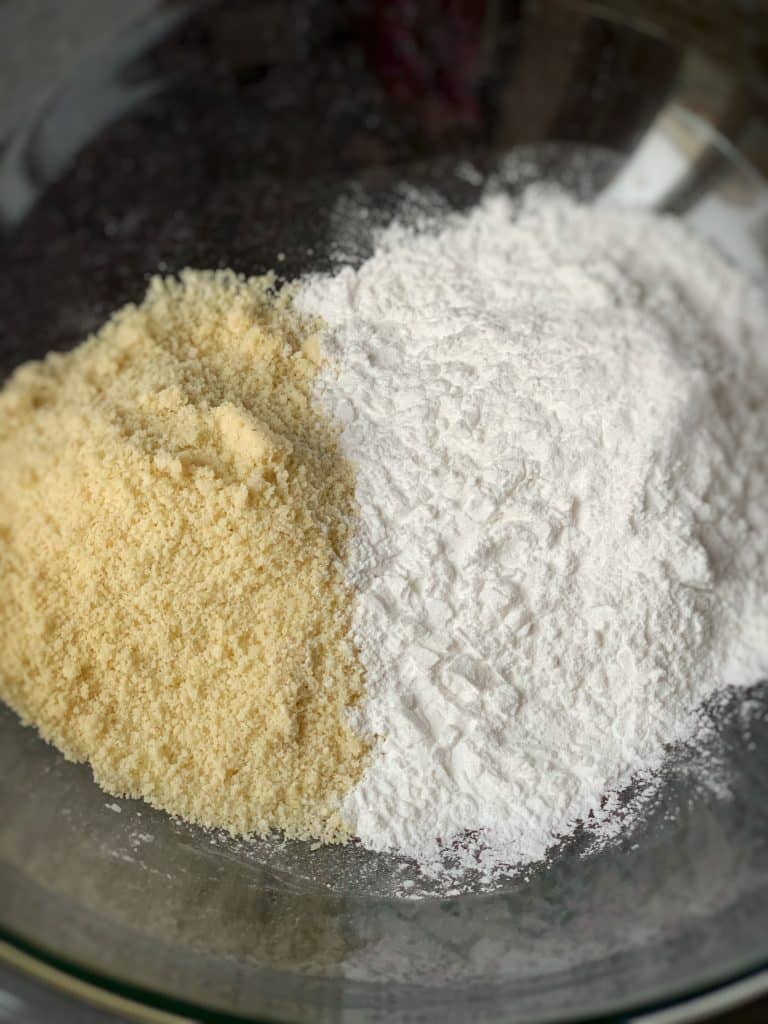
- Almond flour: During a meeting with one of the founders of Capellos, (a grain free pasta and pizza brand) I mentioned how great it would be if I could conquer my gluten free roti quest. The founder suggested almond flour, a gluten free flour made with ground almonds.
- Arrowroot flour: You will need extra for dusting the dough.
- Xanthan gum: I use Bob’s Red Mill Gluten Free Xanthan Gum. It acts as an emulsifier and binds the ingredients.
- Baking powder: Not to be mistaken with baking soda, this leavening agent helps the dough rise.
- Warm water: This keeps the dough soft and easy to roll.
- Salt: For added flavor.
- Melted ghee: This enriches the overall flavor and softens the overall texture of the roti.
- Avocado oil: Use this or any other high-quality cooking oil with a high smoke point (like sunflower oil or light tasting olive oil).
See recipe card for quantities.
How to Make Grain Free (Paleo) Roti
Combine the almond flour, arrowroot flour, xantum gum, salt and baking powder in a large bowl and mix together well. Then add the water and form a soft but stiff dough.
Let the dough rest for 30 minutes, then divide into 3 large balls. Then divide each of the dough balls in half. Roll one ball out until it is paper thin, then place it on a sheet of parchment paper and set aside.
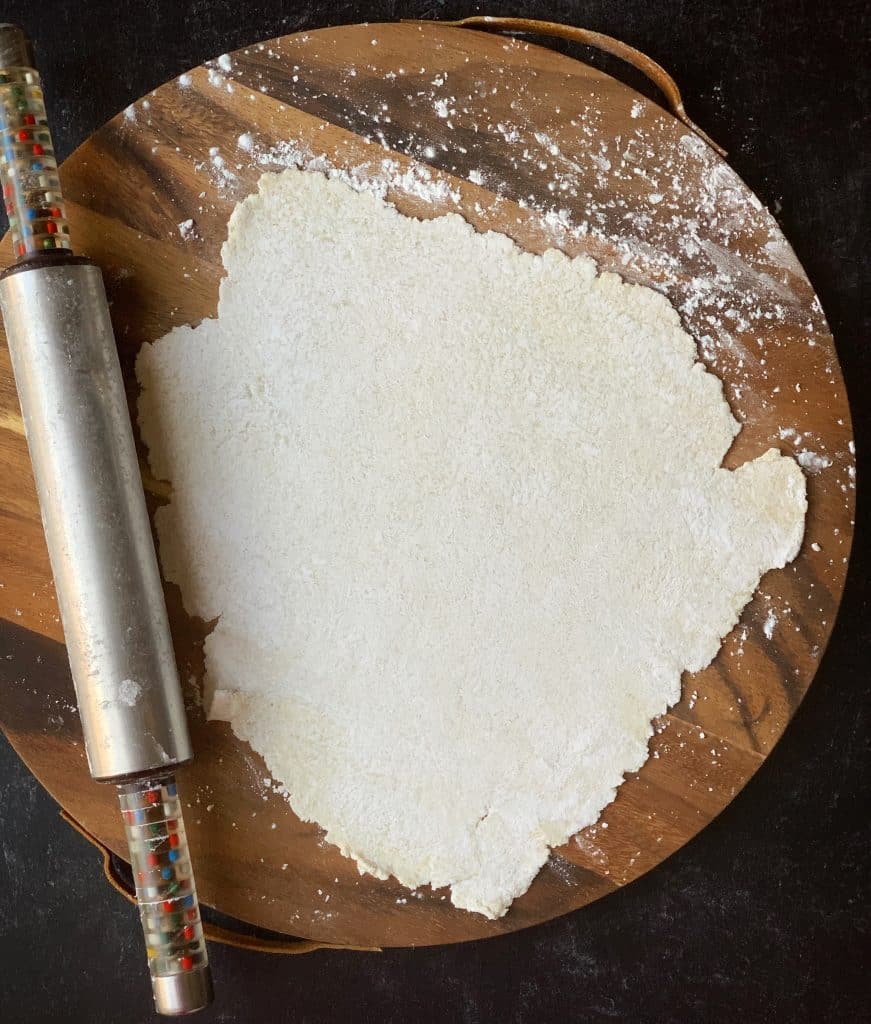

Step by Step for shaping the roti
I’ve tried a few different ways to get layers into the dough like paratha roti, but I always ended up with a pretty thick and heavy roti. Until I started layering the roti similar to how dosti roti is made. Dosti roti uses the same dough as paratha (oil roti) but instead of forming a loi to create layers, two pieces of dough are sandwiched with oil or ghee and rolled together. That is basically what I’ve done here with my gluten free roti.
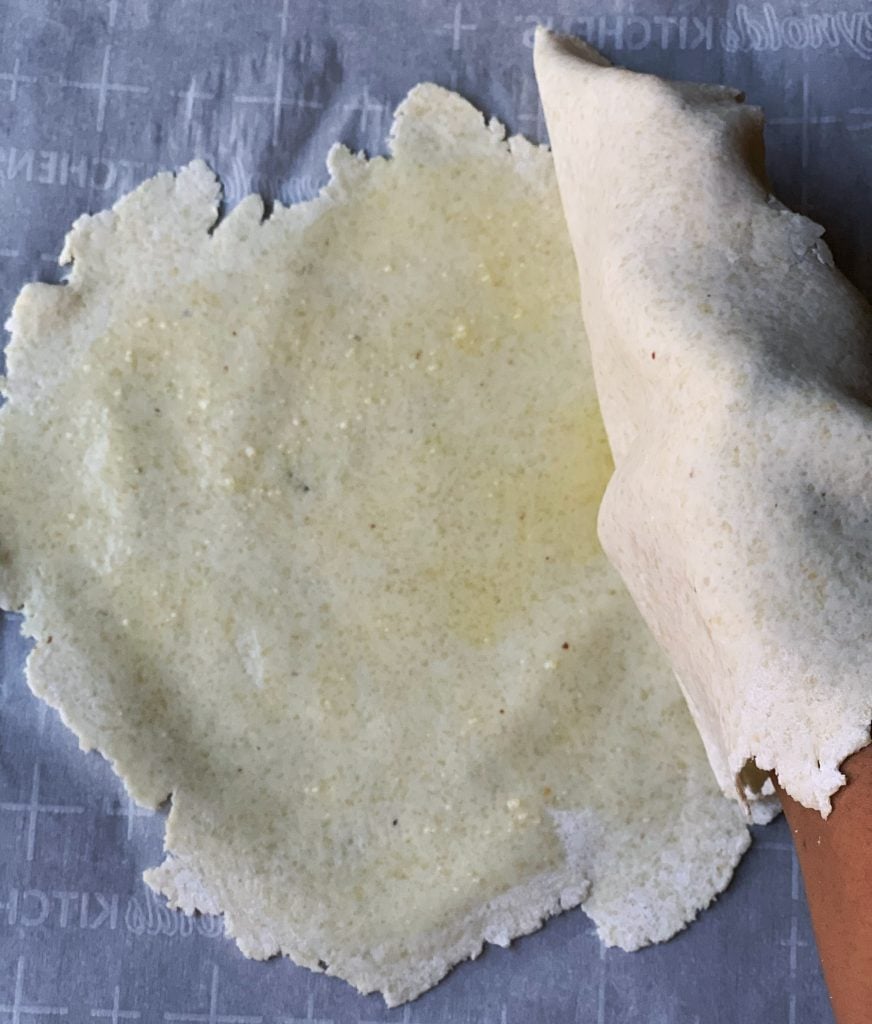

Shaping the gluten free / grain free roti
You can choose to leave the edges as is or you can use a pizza cutter to make them round. For this post I wanted the finished product to be as close to perfection as possible but when I am making them at home, for myself, I leave them as is. Because I really don’t have time to cut edges into perfection when I am juggling three busy children. After making the edges neat I rolled them together with my rolling pin just before placing the gluten free roti on my hot tawah/skillet.
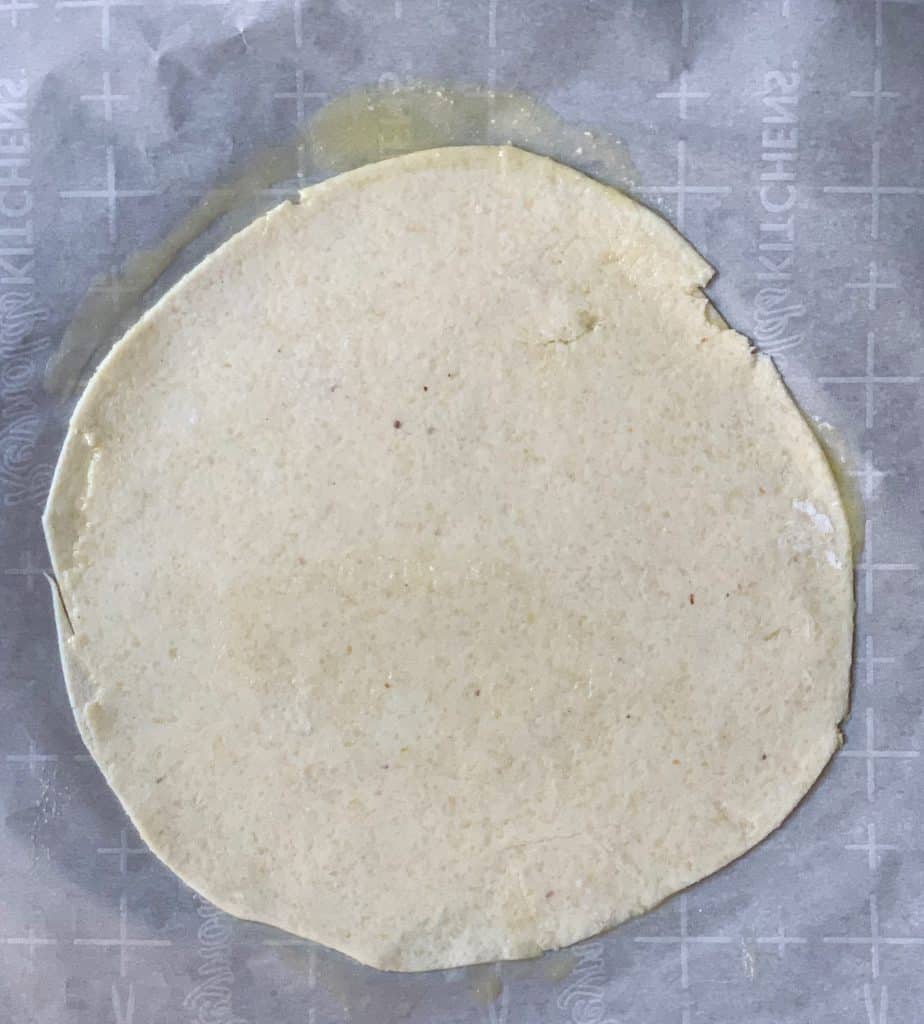
Cooking the roti
This roti is best cooked on medium-high heat. For best results, let the roti cook until it has brown bits on both sides. The roti tastes better when it is cooked really well. During my trials I cooked the dough for a few minutes without letting it brown and it tasted quite raw, so give it time to get brown. It will be worth it.
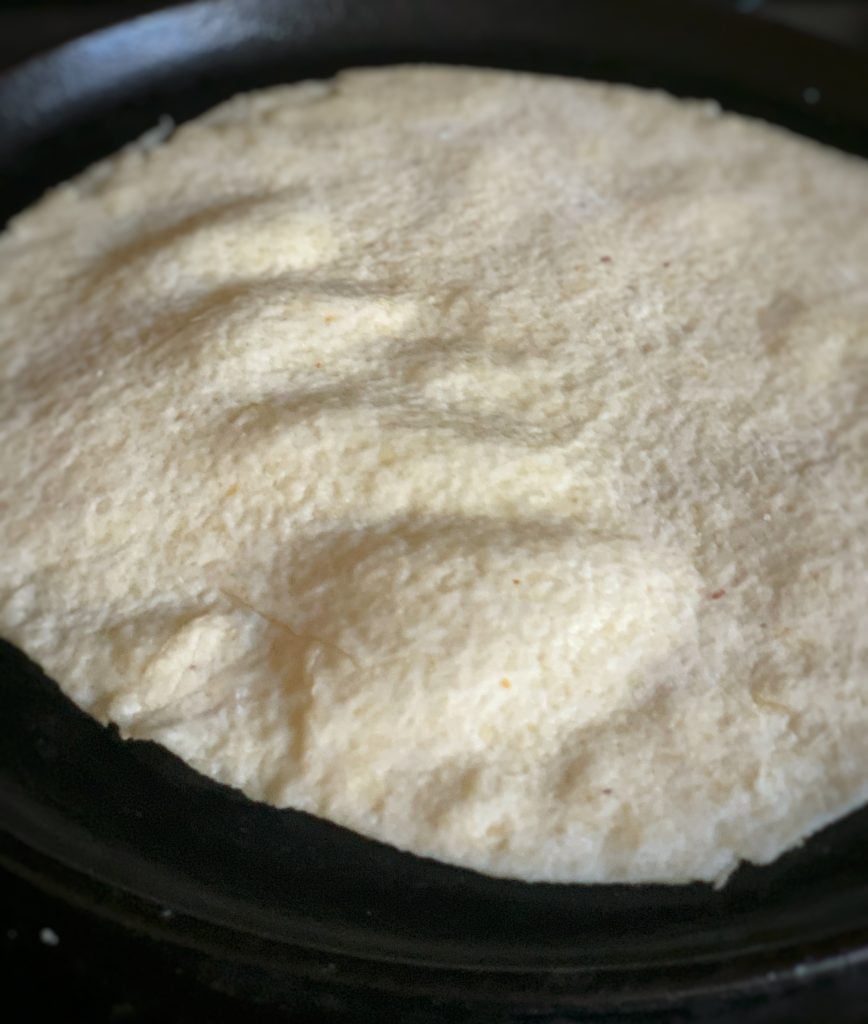
Substitutions & Variations
This grain free roti recipe is very unique because it has been specifically made in order to mimic gluten. Swapping any of the ingredients for another could drastically alter the outcome.
However, I know that other gluten free and grain free roti recipes have found success using various combinations of ingredients including cassava flour, tapioca flour, tapioca starch, psyllium husk, and chickpea flour.
Again, my list of gluten free and grain free roti ingredients has worked for me. I can’t vouch for other substitutions and variations but I will provide an update if or when that happens!
Equipment
- Large Mixing Bowl: This is used to combine the roti dough ingredients.
- Parchment Paper: Use to prevent the roti from sticking together.
- Pizza Cutter: To make the roti perfectly round.
- Skillet or Tawa: The best pan for Guyanese roti is the tawa. But if you have a glass top cooker, that may not be an option. You can use a flat cast iron skillet instead and the roti will come out perfect.
Storage
At room temperature: Leftover gluten free and grain free roti lasts up to 2 days at room temperature.
Fridge: Store them in an airtight container in the refrigerator for up to one week.
Freeze: For longer storage, freeze them for up to 3 months. If you decide to freeze them, wrap your roti individually with plastic wrap, then store in a zip top bag.
To reheat, thaw frozen roti by leaving it at room temperature for about 15 minutes. Then wrap the roti in a few sheets of damp paper towel. Microwave in 30 second increments until the roti is warm.
Tips for the Best Gluten Free and Grain Free Roti
- Make the dough soft but stiff. If you make the dough sticky or wet it will not cook well
- Roll the layers of roti, as thin as possible. The thinner it is rolled out the lighter the finished roti will be.
- Use lots of arrowroot flour to keep the dough dry when rolling it out and cooking it, it will make a huge difference in the finished product.
- You don’t need to roll the dough between parchment paper. It will roll on a regular board as long as you dust it with arrowroot flour.
- Do not dust the roti with almond flour or it will be very grainy and develop a crust.
- The melted ghee can be replaced with coconut oil for a dairy-free alternative.
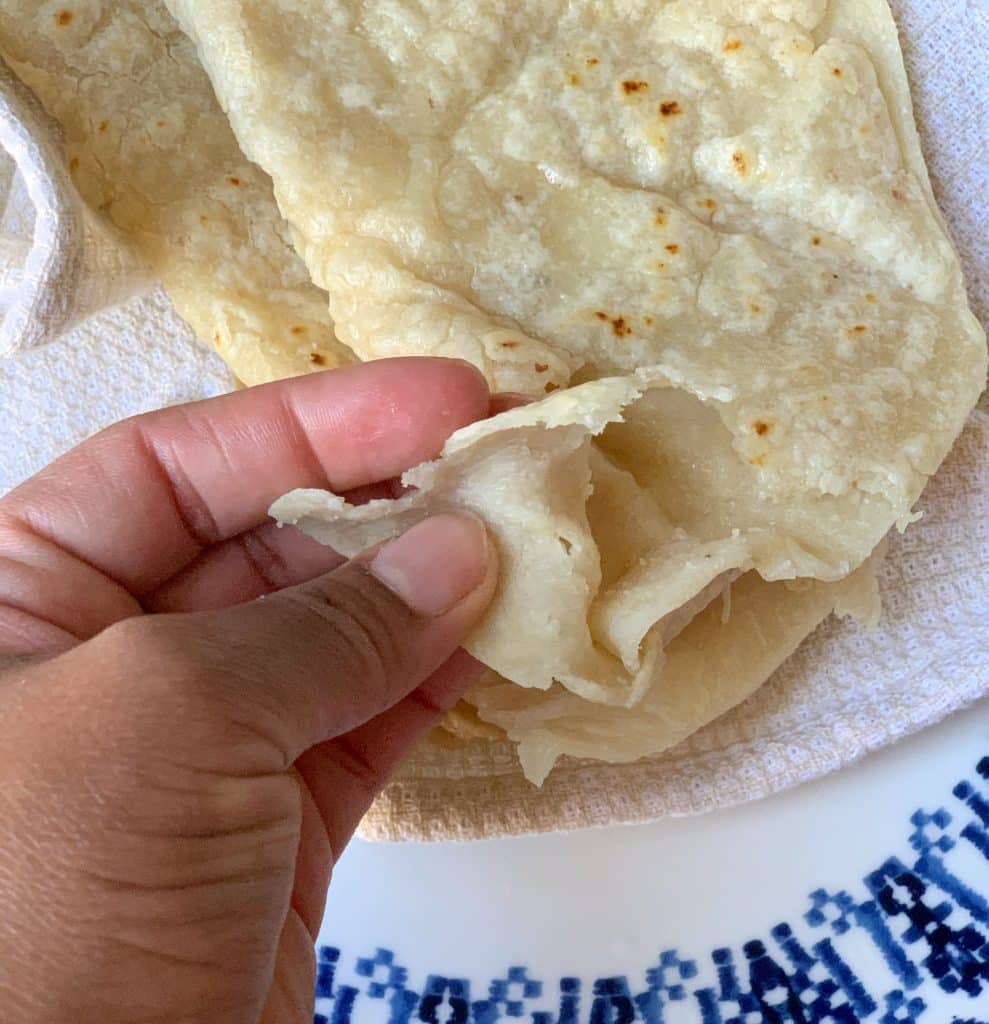
FAQ
Traditional Guyanese roti is made with all purpose wheat flour, which is whole grain. Hence this gluten free, grain free roti for individuals who can not consume gluten or grains.
Almond flour is best for gluten free roti because it closely replicates gluten and results in a soft roti.
Almond flour is not only gluten free and grain free, but nutritious too. It’s rich in antioxidants and is an excellent source of calcium and iron.

Gluten Free / Grain Free Roti

Ingredients
- 1 cup Almond Flour
- 1 cup Arrowroot Flour plus extra for dusting the dough
- 4 teaspoons Xanthan gum
- 2 teaspoons baking powder
- 1/2 cup warm water plus 2 tablespoons
- pinch salt optional
- 3 teaspoons ghee melted
- 1/2 cup avocado oil or similar
Special Equipment
- Parchment Paper
Instructions
- Combine the almond flour, arrowroot flour, Xanthan gum, salt and baking powder in a large bowl and mix together well. Then add the water and bring together to form a soft but stiff dough.
- Let the dough rest for 30 minutes, then divide it into 3 large balls. Then divide each of the 3 balls into two. Roll one ball out until it is paper thin, then place on a sheet of parchment paper and set aside.
- Then roll another ball out until paper thin and brush with about 1 teaspoon of melted ghee. Next add the first rolled out dough on top of the dough covered in ghee. You may use a pizza cutter to cut the rolled out roti into rounded edges, if you like. Next using your rolling pin, roll the roti to seal the two layers together.
- Then place your skillet or tawah on medium heat and bring up to temperature. When skillet is hot but not smoking add roti to a skillet and cook until large air pockets form on top of the roti. This should take about 1 minute.
- Then flip the roti over, brush with oil and flip again. Next brush the roti with some more oil and flip one more time. Allow the roti to cook until lots of brown spots form on the roti then remove from the heat. This step should take about 1 to 2 minutes
- Gently clap the roti to separate the layers and give the top a slightly flakey roti look. To clap the roti place the roti on a flat surface and squish it between your palms, applying force in a clapping motion, to compress the roti in an accordion like manner.
- Allow to cool before serving with your favorite curries or stews
Notes
It will not get really flaky and fluffy but there will be layers
This gluten free roti works really well for wrapping up chicken and other curries
To reheat the roti, place in a damp paper towel and microwave for 30 second increments until you get the desired temperature
Nutrition
The information listed in the recipe card is an estimate provided by an online nutrition tool. The tool evaluates ingredient names and amounts then makes calculations based on the number of servings listed for the recipe. It is provided as a general guideline and not as a precise calculation. For precise nutrition information please feel free to add the ingredients to your preferred nutrition calculator or consult a doctor or licensed nutritionist.


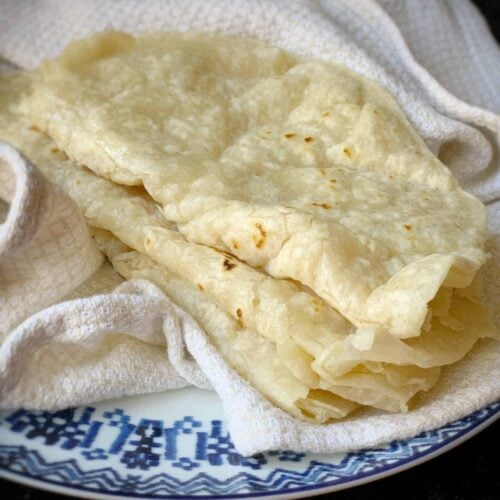
 Guyanese Cheese Straws
Guyanese Cheese Straws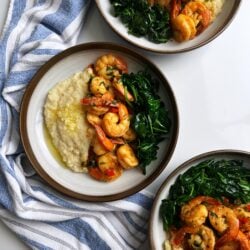 Creamy Farine (Cassava) Grits
Creamy Farine (Cassava) Grits Spaghetti Squash Mac and Cheese (Paleo, Whole30, Keto)
Spaghetti Squash Mac and Cheese (Paleo, Whole30, Keto)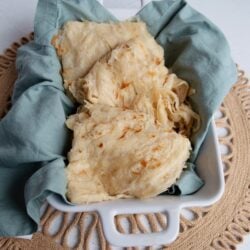 Easy Guyanese Oil Roti (Beginner Friendly Recipe)
Easy Guyanese Oil Roti (Beginner Friendly Recipe)
Priya Says
Hi- any possibility of making gluten free roti using a substitute for almond flour? I am allergic to nuts
Sherry Says
Can the arrowroot flour be replaced??
Janis Nicole Says
I will give this a go..it’s been years of longing for a good gluten free roti recipe.
Thank you for sharing!
Rana Tabassum Says
Hi,
I really love to try it out but can you please share the nutrition facts?
Thank you
Abbi Says
Great recipe! Straight forward and pretty easy to put together which is really saying something for a grain free recipe! Sooo yummy, thanks for the great recipe!!
Althea Brown Says
Thank you for trying it
Natalie Says
Can I make the roti dough it the next
Natalie Says
Can I make the roti dough snd cook it the next day?
Althea Brown Says
You sure can! Just put in it a ziplock or cling wrap and stick it in your refrigerator.
GrannyD Says
Hi Althea. Gluten has been a problem for many many people all over the world. You should get in contact with Tom O’Bryan. He gives seminars all over the world about the dangers of Gluten. Dr. Andrea Jordheim, Dr Peter Osborne. I know one Guyanese Lady who does not like the xanthum Gum. Is there an alternative? I like Dr Tom the best. He is funny.
GrannyD Says
Hi Althea. I did not get it. Why is has to be dosti roti and not paratha. I like dosti roti. But I like paratha the best. Can you explain again for me to understand. Thanks
GrannyD
H Says
Hey Althea,
I tried the recipe for gluten free roti, but for some reason it came out hard trying to figure out what I may have done incorrectly. Did you experienced that when make gluten free roti for first time with avocado flour? Any advice welcome.
Althea Brown Says
Avocado flour? Is that a typo? It should be almond flour. Mine never comes out stiff and I’ve been making it for quite some time. Did you follow the recipe exactly?
Elena Says
OMG OMG OMG OMG OMG OH MY GODDESS!!!! All hail the new gluten free queen…YOU! My husband is Guyanese, and I am the whitest white girl, ever. But I *love* my mother-in-law’s cooking, and I have managed to learn how to make paratha rotis…pretty good ones! But about ten years ago I realised gluten was to blame for so many of my issues, and I’ve been searching and playing with flour blends ever since. Along the way I developed an issue with tapioca, which is in everything gluten free, right? But now. Now my GF sister in law and I can finally enjoy rotis with everyone else! Thank you SO much for sharing this recipe! But now, real talk time, how do these reheat?
Althea Brown Says
I like you have the same issues. I discovered gluten was making me sick 5 years ago and have been playing with gluten free flour ever since. Do you follow me on Instagram @metemgee. I showed my reheated gluten free roti in my stories yesterday and I’ll pin it to my highlight. But real talk they are better fresh. They reheat and are good up to 3 days after cooking but not as good as when I first make them. Hope this helps.
Elena Says
That’s great, thank you! I fo follow you on IG, I just don’t check it that often. But I will go see it now. And again, thank you!!!! I can’t wait to make some curry and roti now!
Althea Brown Says
Can’t wait to hear what you think